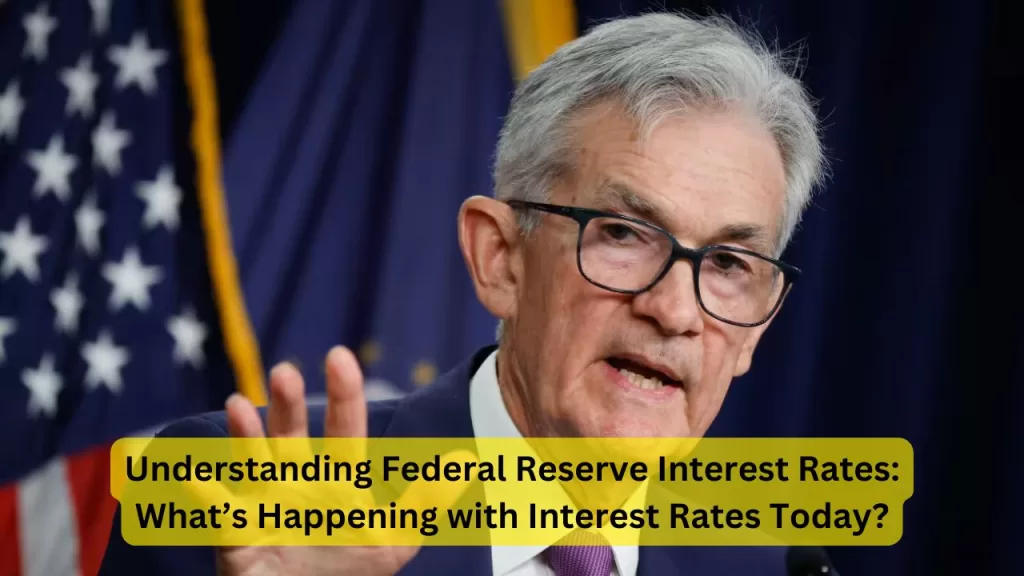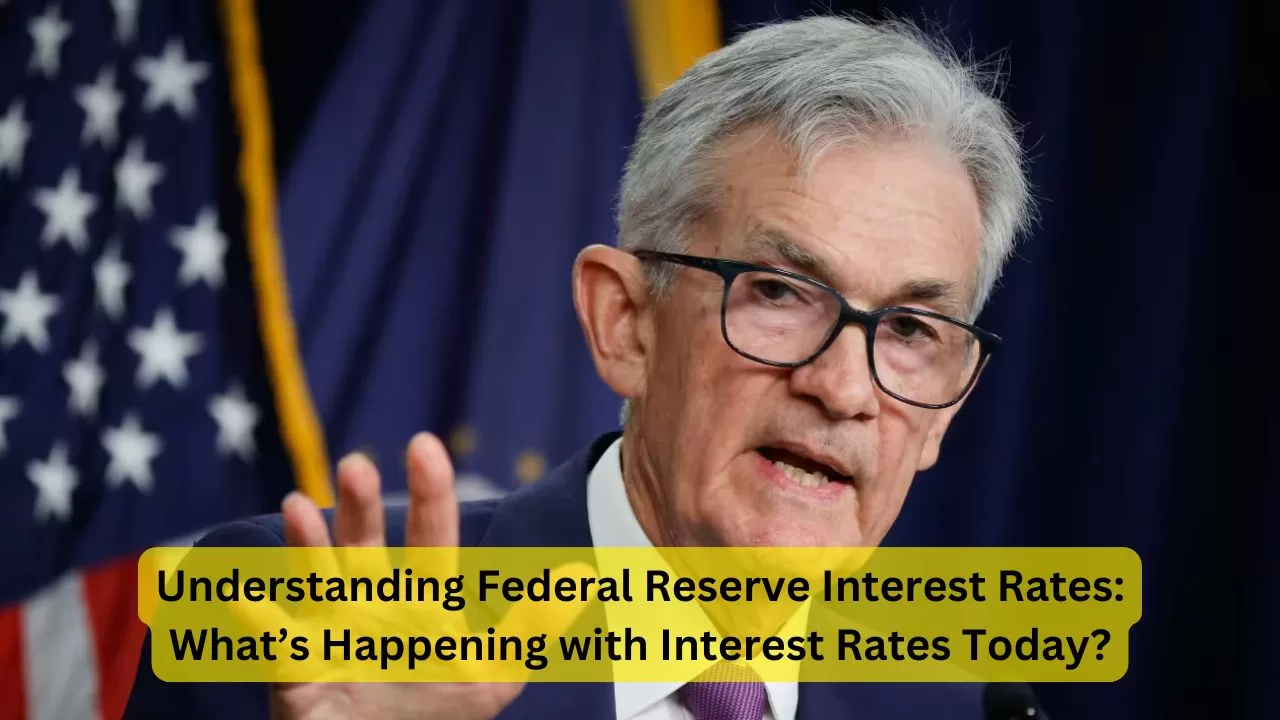
When it comes to the economy, few factors have as significant an impact as interest rates. Specifically, the decisions made by the Federal Reserve regarding interest rates can influence everything from mortgage rates to savings accounts. In this blog post, we’ll delve into the latest updates on interest rates today, discuss the role of the Federal Reserve, and examine key figures like Jerome Powell and their impact on the economy.
What Are Federal Reserve Interest Rates?
The Federal Reserve, often referred to as the Fed, is the central banking system of the United States. One of its key functions is to set the federal funds rate, which is the interest rate at which banks lend money to each other overnight. This rate influences the general level of interest rates across the economy, affecting everything from consumer loans and mortgages to business investments.
How the Federal Reserve Influences Interest Rates
The Fed adjusts the federal funds rate to achieve its dual mandate: promoting maximum employment and stabilizing prices (controlling inflation). When the economy is growing too quickly and inflation is rising, the Fed might increase interest rates to cool things down. Conversely, if the economy is slowing down or facing a recession, the Fed might cut rates to stimulate growth.
Interest Rates Today: What’s the Latest?
As of today, interest rates are a focal point of economic discussions. The latest decision from the Federal Reserve can significantly impact various aspects of the economy. Here’s what you need to know:
Current Fed Decision
In recent months, the Federal Reserve has been carefully monitoring economic indicators to determine its next move. The decision on interest rates is often influenced by several factors, including:
- Inflation Rates: If inflation is higher than the Fed’s target, the Fed may raise rates to bring it down.
- Employment Figures: High employment levels might prompt the Fed to raise rates to prevent the economy from overheating.
- Economic Growth: Slowing growth could lead the Fed to cut rates to encourage borrowing and investment.
Jerome Powell’s Role
Jerome Powell, the current Chairman of the Federal Reserve, plays a crucial role in these decisions. Appointed in 2018, Powell has overseen several pivotal moments in monetary policy. His speeches and public statements are closely watched by economists, investors, and policymakers for clues about future rate changes.
Powell has often emphasized the Fed’s commitment to addressing both inflation and unemployment. His approach to monetary policy has been shaped by the economic conditions he inherited and the challenges posed by events like the COVID-19 pandemic.
Fed Meeting Today
The Fed meeting today is highly anticipated. Market participants will be looking for insights into the Fed’s current thinking and future plans. Key points to watch for include:
- Rate Adjustments: Will the Fed decide to cut or raise interest rates? The decision will be based on the latest economic data and forecasts.
- Economic Outlook: Any changes in the Fed’s economic projections could signal future monetary policy moves.
- Statements and Guidance: The Fed’s accompanying statement and Powell’s press conference will provide context for the decision and guidance on future actions.
The Impact of Interest Rate Cuts
When the Fed cuts interest rates, it typically aims to stimulate economic activity. Lower interest rates make borrowing cheaper for businesses and consumers, which can lead to increased spending and investment. Here are some effects of interest rate cuts:
1. Boost in Consumer Spending
With lower interest rates, consumers can enjoy reduced borrowing costs for mortgages, car loans, and credit cards. This can lead to increased consumer spending, which drives economic growth.
2. Encouragement for Business Investment
Businesses benefit from lower borrowing costs, making it easier for them to invest in new projects, expand operations, or hire more employees. This can spur job creation and further economic expansion.
3. Effects on Financial Markets
Interest rate cuts often lead to lower yields on government and corporate bonds. As a result, investors may shift their money into stocks or other assets, potentially driving up equity prices.
4. Impact on Currency Value
Lower interest rates can lead to a weaker national currency because investors seek higher returns elsewhere. A weaker currency can boost exports by making them cheaper for foreign buyers.
Challenges and Considerations
While interest rate cuts can stimulate economic activity, they also come with potential downsides:
1. Inflation Risks
If the economy overheats, lower interest rates can contribute to rising inflation. This can erode purchasing power and lead to higher costs of living.
2. Asset Bubbles
Extended periods of low interest rates may lead to asset bubbles, where the prices of stocks, real estate, or other assets become inflated beyond their true value. When these bubbles burst, it can lead to economic instability.
3. Impact on Savings
Low interest rates can hurt savers, as they receive lower returns on savings accounts and fixed-income investments. This can be a concern for retirees or those relying on interest income.
Looking Ahead: What to Watch For
As we move forward, keep an eye on the following:
1. Economic Data Releases
Regular updates on inflation, employment, and economic growth will be crucial in determining future Fed decisions. Strong economic data might lead to rate hikes, while weaker data could result in additional cuts.
2. Federal Reserve Statements
Pay attention to statements and speeches from Fed officials, especially Chairman Jerome Powell. Their insights can provide valuable clues about the Fed’s future monetary policy direction.
3. Global Economic Conditions
Global economic events and conditions, such as international trade tensions or geopolitical developments, can also impact the Fed’s decisions and the broader economic landscape.
Conclusion
Understanding the Federal Reserve interest rates and their impact on the economy is crucial for both investors and consumers. The Fed’s decisions, led by figures like Jerome Powell, have far-reaching effects on interest rates today and the overall economic environment.
Whether it’s a decision to cut rates to stimulate growth or to raise them to control inflation, these moves play a significant role in shaping economic activity. By staying informed about Fed meetings, economic data, and the broader economic context, you can better navigate the implications of interest rate changes on your financial decisions.
